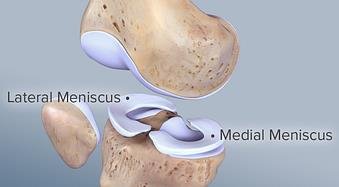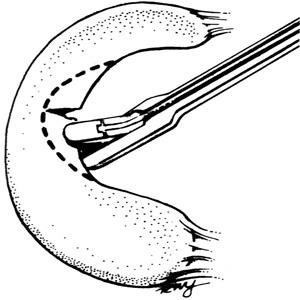How I Treat Meniscal Injuries of Knee
Athletes who play contact sports like football, hockey or even non-contact sports like tennis, badminton or squash are prone to meniscus tears. But you can also get this injury when you kneel, squat, or lift something heavy. The risk of injury increases as you get older, when bones and tissues around the knee.
If you tear your meniscus, your leg may swell and feel stiff. You may feel pain when twisting your knee, or be unable to straighten your leg fully. Usual treatment for a meniscus tear will depend on its size, what kind it is, and where it’s located within the cartilage of the knee. I usually recommend will recommend rest, use pain relievers, and application of ice to keep the swelling down. I believe in a good suggest physical therapy for 4-6weeks. This will help to strengthen the muscles around your knee and keep it stable.
But if pain and disability continues, I recommend further key hole surgery (arthroscopic surgery).

Figure 1
What is meniscus ?
Two C-shaped discs of cartilage (soft tissue) that connect your thigh bone to your shinbone. These are called menisci (Fig 1). They’re like shock absorbers for your bones. They also help to keep your knee stable.
Managing meniscus injuries

Figure 2
The approach to meniscal tears in the active individual emphasizes tissue repair over resection because meniscal tissue preservation has several potential advantages that improve the biomechanics and natural history of knee function over time. The technical approach to meniscal repair has significantly evolved in the last 10 years and continues to expand.
Meniscal injuries represent one of the most common orthopedic injuries of the knee. The most frequent treatment is partial resection of the meniscus (Fig 2), or meniscectomy, which can affect joint mechanics and health. For this reason, there is shift gradually towards suture repair (Fig 3), with the intent of preservation of the tissue. “Save the Meniscus” is now a prolific theme in the field; however, meniscal repair can be challenging and ineffective in many scenarios.
Meniscal trimming or Repairs

Figure 3
The pattern of the tear can determine whether your tear can be repaired. Radial tears sometimes can be repaired, depending on where they are located. Horizontal, flap, long-standing, and degenerative tears-those caused by years of wear and tear-generally cannot be repaired. Your age, your health, and your activity level may also affect your treatment options. In some cases, the surgeon makes the final decision during surgery, when he or she can see the how strong the meniscus is, where the tear is, and how big the tear is.
Some tips for patients who need more details
- If you have a small tear at the outer edge of the meniscus (in what doctors call the RED ZONE), you may want to try home treatment. These tears often heal with rest.
- If you have a moderate to large tear at the outer edge of the meniscus (RED ZONE), you may need surgical repair. These kinds of tears tend to heal well after arthroscopic or open surgery.
- If you have a tear that spreads from the red zone into the inner two-thirds of the meniscus (called the WHITE ZONE), your decision is harder. Repair may not work. Trimming of the torn meniscus is required.
- If you have a tear in the WHITE ZONE of the meniscus, and its causing symptoms then it is better to do trimming of the torn meniscus.
ARTHROSCOPIC SURGERY
By doing surgery arthroscopically your recovery time and pain is less, and operative risks are reduced. The knee is able to be examined in greater detail, and throughout the entire knee, something that cannot be done with conventional surgery.
There are biological- and material-based systems being developed to promote meniscal healing. We found that biologic augmentation typically aims to improve cellular incorporation to the wound site, vascularization in the inner zones, matrix deposition, and inflammatory relief. Furthermore, materials can be used, both with and without contained biologics, to further support matrix deposition and tear integration, and novel tissue adhesives may provide the mechanical integrity that the meniscus requires.
